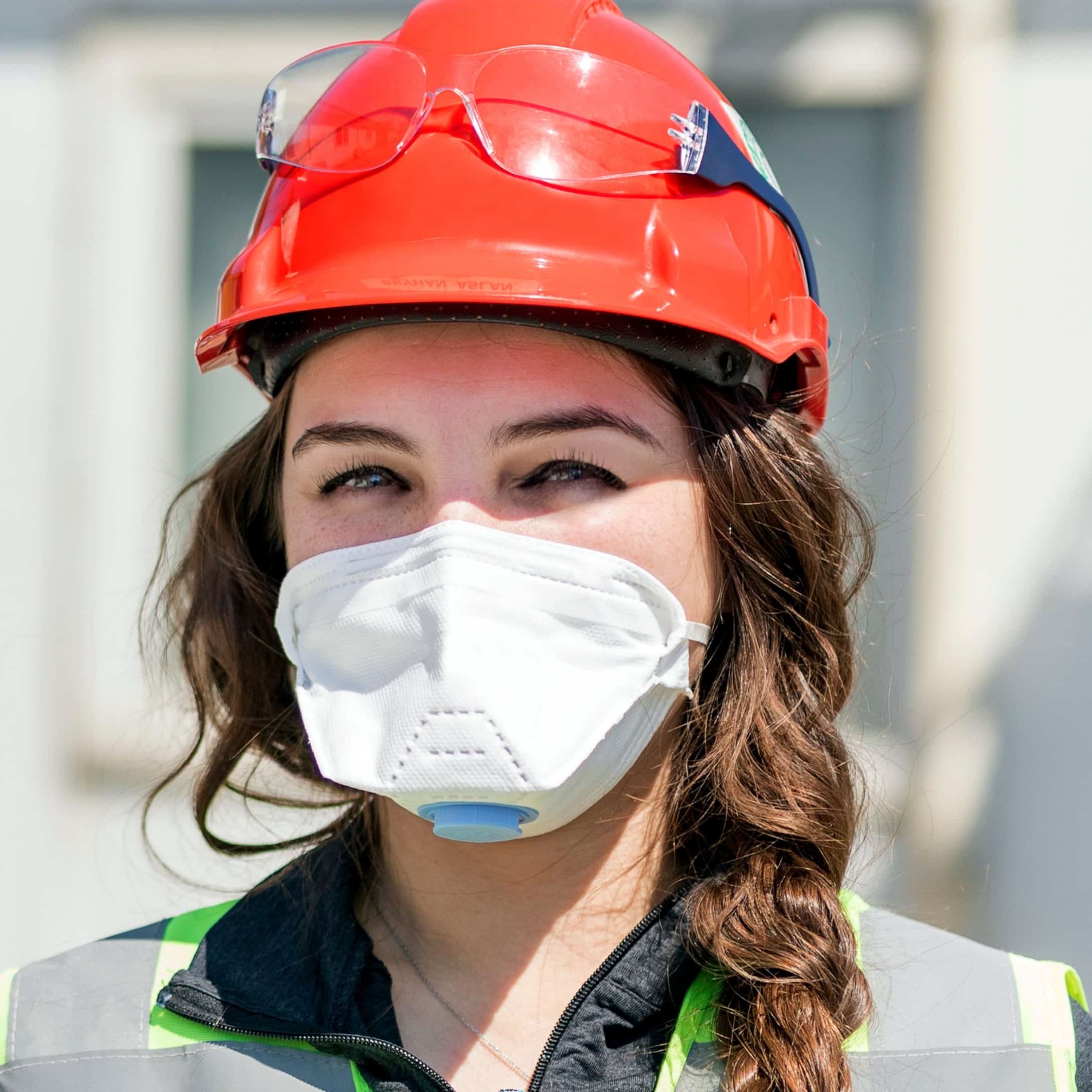Ensuring Safe Practises in the UK Workplace
In the context of the United Kingdom, maintaining a safe workplace is critical. To accomplish this, employers must implement good safety practises that prioritise their employees’ well-being.
To begin, conducting regular risk assessments aids in the identification of potential hazards and the implementation of appropriate preventive measures.
Second, thorough training ensures that employees are well-versed in safety protocols and procedures.
Finally, ensuring the availability and proper use of safety equipment reduces the risk of accidents even further.
Legal Framework and Compliance: UK Health and Safety
In the United Kingdom, workplace health and safety are governed by a strong legal framework that is intended to protect the well-being of employees. These laws and regulations are intended to prevent workplace accidents, illnesses, and injuries.
Key Regulations and Acts
- Health and Safety at Work, etc. Act 1974: This act, which is the cornerstone of UK health and safety legislation, places employers squarely in charge of their employees’ health and safety. It is their responsibility to provide a safe working environment, adequate training, and the necessary protective equipment.
- Management of Health and Safety at Work Regulations 1999: This regulation supplements the Health and Safety at Work Act by laying out specific requirements for risk assessments, health and safety management systems, and workplace hazard control measures.
Responsibilities of Employers and Employees
Employers have a legal obligation to protect their employees’ health and safety by putting preventive measures in place, conducting risk assessments, and providing appropriate training. Employees, on the other hand, must follow safety guidelines, wear protective equipment, and report any hazards they encounter.
Risk Assessment and Management
Prioritising workplace health and safety in the United Kingdom necessitates a thorough risk assessment and management approach. Understanding risk assessment entails identifying potential hazards and assessing the risks associated with them. Once identified, hazards must be carefully prioritised in order to address the most critical risks first. To mitigate potential dangers, effective risk control measures must be implemented.
Understanding Risk Assessment in the UK Workplace
Risk assessment is critical to ensuring a safe working environment in the UK. It entails the systematic identification of potential hazards and assessing the likelihood of harm they pose to employees.
Identifying Hazards and Potential Risks
Employers must meticulously identify and assess various workplace hazards. Physical hazards, such as slick floors or faulty machinery, are included, as are chemical hazards, ergonomic issues, and psychosocial factors that may have an impact on employees’ well-being.
Evaluating and Prioritising Risks
Once identified, hazards should be thoroughly assessed to determine their severity and likelihood of occurrence. This assessment aids in risk prioritisation by focusing attention on the most serious threats that require immediate attention.
Implementing Risk Control Measures
Employers must implement appropriate control measures to mitigate or eliminate risks after assessing them. This could include implementing engineering controls, providing personal protective equipment (PPE), revising work procedures, or providing employees with appropriate training.
Regular Review and Update of Risk Assessment
Risk assessments should be dynamic and reviewed on a regular basis. New hazards may emerge as workplaces evolve, or the effectiveness of existing controls may change. As a result, periodic reevaluation ensures that safety measures remain relevant and effective.
Accident Reporting and Investigation
Prioritising workplace safety in the United Kingdom entails a comprehensive approach that includes accident reporting and investigation. Understanding the accident reporting process is critical for all employees to report incidents as soon as possible, ensuring potential hazards are addressed. Employers and employees must both meet specific reporting requirements in order to foster a transparent and accountable safety culture.
Accident investigation is critical to preventing recurrences by identifying root causes and implementing corrective measures.
Understanding the Accident Reporting Process
A thorough understanding of the accident reporting process is critical in the realm of UK Health and Safety. Reporting workplace accidents and incidents as soon as possible allows for immediate attention to injured employees, proper documentation, and the start of investigations. Businesses can assess potential hazards, implement preventive measures, and maintain a safer work environment by promptly reporting accidents.
Reporting Requirements for Employers and Employees
Employers and employees both play critical roles in accident reporting. Employers in the United Kingdom are required by law to keep accurate records of accidents and incidents in a designated logbook. Employees, on the other hand, must report accidents to their supervisors or managers, who must then investigate and take appropriate action.
The Role of Accident Investigation in Preventing Recurrence
Accident investigation is a critical step in preventing workplace incidents from recurring. Businesses can identify underlying issues in safety protocols, equipment, or employee training by investigating the root causes of accidents. This allows them to make targeted improvements, lower risks, and improve overall workplace safety.
Using Accident Data to Improve Safety Practises
Data from accidents can be used to improve safety practises. Employers can make informed decisions, tailor safety training programmes, and invest in necessary safety equipment by analysing trends and patterns in incident reports. This data-driven approach promotes a proactive safety culture by mitigating potential risks and prioritising employee well-being.
Emergency Preparedness and Response in UK Health and Safety
Being well-prepared for emergencies is critical for protecting employees and effectively responding to unforeseen events. Creating a comprehensive Emergency Action Plan (EAP) outlining procedures and protocols for various types of emergencies is critical. Defining roles and responsibilities helps ensure a coordinated response during a crisis. Regular fire drills and evacuation procedures assist employees in becoming acquainted with emergency exits and evacuation routes.
Furthermore, providing first aid training and access to medical assistance allows staff to provide basic care until professional help arrives.
Developing an Emergency Action Plan (EAP)
A well-crafted Emergency Action Plan (EAP) is essential in the realm of UK Health and Safety to protect employees and visitors during crises. This plan should include specific procedures for dealing with various emergencies, such as fires, natural disasters, and medical emergencies. Assessing potential hazards, establishing communication protocols, and appointing responsible individuals to carry out the plan are all critical steps in creating a comprehensive EAP.
Roles and Responsibilities during Emergencies
It is critical to assign specific roles and responsibilities in order to ensure a coordinated response during emergencies. It helps to streamline response efforts and avoid confusion by clearly defining who is in charge of evacuations, who provides first aid, and who communicates with emergency services.
Regular training and drills are essential for familiarising employees with their roles and increasing readiness.
Fire Drills and Evacuation Procedures
Fire drills on a regular basis and well-practiced evacuation procedures are essential components of emergency preparedness. Drills allow employees to practise safe and efficient evacuation, become acquainted with escape routes, and become familiar with assembly points. Keeping fire safety equipment in good working order improves readiness even more.
First Aid and Medical Assistance
A fundamental aspect of emergency preparedness is the provision of easily accessible and well-marked first aid stations stocked with essential supplies. Training designated employees in first aid and CPR enables them to provide immediate assistance in the event of an injury or medical emergency until professional assistance arrives. Furthermore, having a system in place to quickly contact medical services can help expedite the response in critical situations.
Ergonomics and Workplace Design
Businesses in the United Kingdom must prioritise ergonomics, and workplace design is critical to promoting employee well-being and productivity. A well-designed ergonomic workspace not only provides physical comfort but also protects against Musculoskeletal Disorders (MSDs) caused by poor posture and repetitive tasks.
Employers can help their employees even more by providing adequate break and rest areas, which allow them to recharge and reduce stress. UK businesses can foster a healthier and more efficient workforce by embracing ergonomic principles and creating thoughtfully designed work environments, resulting in improved overall workplace safety and job satisfaction.
Designing Ergonomic Workspaces for Employee Well-being
Designing ergonomic workspaces is critical in the realm of UK Health and Safety to prioritise employee well-being and productivity. Ergonomics is concerned with designing work environments that meet the needs of individuals, taking into account factors such as workstation layout, chair ergonomics, and computer setup. Businesses can reduce the risk of musculoskeletal issues while also improving employee comfort and job satisfaction by providing adjustable furniture and promoting proper posture.
Preventing Musculoskeletal Disorders (MSDs)
Preventing musculoskeletal disorders (MSDs) is an important aspect of workplace health and safety in the United Kingdom. Repetitive motions, awkward postures, and excessive force are risk factors that must be addressed by employers on a regular basis. MSD risks can be reduced and a healthier workforce promoted by implementing ergonomic solutions, providing regular breaks, and encouraging stretching exercises.
Providing Adequate Break and Rest Areas
Employee well-being and productivity depend on adequate break and rest areas. Employers in the United Kingdom should ensure that their employees have access to clean, comfortable areas to relax and recharge during breaks. Such areas can help reduce stress, improve mental health, and increase overall job satisfaction.
Mental Health and Well-being at Work
Employers are increasingly recognising the significance of mental health in the workplace, understanding that their employees’ well-being has a direct impact on productivity and overall success. Addressing work-related stress and mental health issues has become a top priority, with businesses putting in place supportive measures and resources to help their employees.
Creating a supportive and inclusive work environment is critical for promoting mental health, reducing stigma, and encouraging open communication.
Recognising the Importance of Mental Health in the Workplace
Recognising the importance of mental health in the workplace is critical. Employers and employees must both recognise that mental health has a direct impact on productivity, job satisfaction, and overall performance. Creating a mental health-focused environment helps to reduce stigma, encourage open conversations, and support individuals facing challenges.
Addressing Work-related Stress and Mental Health Issues
Addressing work-related stress and mental health issues is critical to maintaining a healthy workforce. Employers should identify stressors and implement strategies to mitigate their impact on a proactive basis. Offering support services, such as counselling or Employee Assistance Programmes (EAPs), can assist people in coping with mental health issues and foster resilience.
Promoting a Supportive and Inclusive Work Environment
A supportive and inclusive work environment is critical to ensuring mental health. Fostering an environment of empathy, understanding, and work-life balance increases job satisfaction and decreases burnout. Employers can promote mental health among their employees through awareness campaigns, flexible working arrangements, and fostering a sense of community.
Contractor and Visitor Safety
Maintaining a safe work environment includes not only regular employees but also contractors and visitors. Businesses must carefully consider safety measures for these external individuals in the realm of UK Health and Safety. It is critical to communicate safety rules and regulations clearly so that everyone on site understands their responsibilities.
Regular monitoring of contractors’ adherence to health and safety standards aids in the identification of potential hazards and ensures adherence to established protocols.
Safety Considerations for Contractors and Visitors
It is critical for a safe working environment to ensure the safety of contractors and visitors. Employers must conduct comprehensive risk assessments in order to identify potential hazards and communicate relevant safety measures to all parties involved. Providing contractors and Visitors with the necessary information and training helps to reduce accidents while also promoting a culture of safety and responsibility in the workplace.
Communicating Safety Rules and Regulations
Effectively communicating safety rules and regulations is critical to keeping everyone on site informed and aware of potential risks. Before work begins, it is critical to post clear signage, distribute safety guidelines, and hold safety briefings. Employers should also encourage open communication between contractors, visitors, and employees in order to address any safety concerns quickly and foster a collaborative, safety-conscious environment.
Monitoring Contractor Compliance with Health and Safety Standards
Maintaining strict health and safety standards, as well as monitoring contractor compliance on a regular basis, is critical. Employers should conduct inspections, audits, and reviews on a regular basis to ensure that contractors follow the established safety protocols. Addressing any noncompliance issues as soon as possible helps mitigate risks and demonstrates a commitment to maintaining high health and safety standards for all individuals on the premises.
By putting contractor and visitor safety first, UK workplaces can create a safe environment and protect everyone involved.
Continuous Improvement and Review
Fostering a culture of continuous improvement is critical in the realm of UK Health and Safety to ensure workplace safety. Regular health and safety audits are critical in determining the effectiveness of safety practises. Employers can identify potential hazards, identify areas for improvement, and address safety concerns proactively by conducting thorough assessments. Incorporating feedback from employees and stakeholders strengthens safety protocols even further, allowing necessary adjustments to be made to improve overall well-being and reduce workplace risks.
The Importance of Regular Health and Safety Audits
Regular audits are a cornerstone of continuous improvement in the realm of UK Health and Safety. Companies can identify potential hazards, assess compliance with regulations, and identify areas for improvement by conducting systematic and objective evaluations of workplace practises. Businesses that conduct proactive audits demonstrate their commitment to maintaining a safe working environment and ensuring that safety protocols are effectively implemented.
Evaluating the Effectiveness of Safety Practises
Evaluating the effectiveness of safety practises is critical to fostering a safety culture. Organisations can assess the success of their efforts to reduce workplace accidents by analysing incident reports, monitoring near-misses, and measuring safety performance indicators. Data-driven assessments enable targeted improvements and enable UK businesses to optimise their safety strategies.
Incorporating Feedback and Making Necessary Adjustments
Employee feedback is essential for effective health and safety management. Engaging employees in safety discussions and encouraging them to report concerns helps foster a collaborative and responsive safety culture. Companies demonstrate their commitment to employee well-being, instill trust, and continuously improve safety measures by acknowledging feedback and quickly implementing necessary adjustments.
Safety Training and Education
In the United Kingdom, health and safety training is critical to ensuring a safe working environment. Employees must be given the knowledge and skills they need to respond effectively to potential hazards. Fire safety, manual handling techniques, working at heights, and the proper use of personal protective equipment (PPE) should all be covered in the training.
Importance of Employee Training in Health and Safety
Employee training is extremely important in the realm of UK Health and Safety. Employees who have received proper training are better equipped to identify and mitigate potential risks, resulting in a safer work environment. Investing in training not only ensures compliance with regulations but also empowers workers to take an active role in protecting their own and their colleagues’ well-being.
Topics to Cover in Workplace Health and Safety Training:
Fire Safety
Workplace health and safety training should include fire safety protocols, such as how to use fire extinguishers, evacuate safely, and adhere to fire evacuation plans. Raising fire safety awareness and implementing preventive measures can significantly reduce the risk of fire-related accidents.
Manual Handling
Manual handling techniques must be used correctly to avoid musculoskeletal injuries. Employees’ health and safety are improved by training them on proper lifting and carrying techniques, as well as the use of mechanical aids.
Working at Heights
Working at Heights training on safe practises, proper use of equipment like harnesses and ladders, and understanding fall prevention measures are essential for employees involved in tasks at heights, such as construction or maintenance work, to prevent serious accidents.
COSHH Awareness (Control of Substances Hazardous to Health)
COSHH training focuses on the safe handling of hazardous substances, including the proper use of personal protective equipment, comprehension of safety data sheets, and implementation of control measures to reduce exposure to harmful chemicals.
Slips, Trips and Falls
Slips, trips, and falls are common causes of workplace accidents. Employee training in identifying potential hazards, maintaining clear walkways, and promoting good housekeeping can significantly reduce these incidents.
Emergency First Aid at Work
Employees who receive basic first aid training are better prepared to respond quickly and effectively in the event of an injury or medical emergency until professional help arrives, potentially saving lives and reducing the severity of injuries.
Manual Handling (Refresher)
Periodic manual handling refresher training reminds employees of proper techniques and reinforces safe practises, lowering the risk of injuries caused by lifting and moving heavy objects.
Mental Health Awareness
Promoting mental health awareness contributes to the creation of a supportive work environment. Employees’ overall well-being and job satisfaction can be improved by training them to recognise signs of mental health issues, reducing stigma, and providing access to support resources.
Stress Awareness
Employees who receive stress management training are better able to recognise and cope with workplace stressors, increasing resilience and productivity while decreasing the negative impact of stress on mental and physical health.
Personal Protective Equipment (PPE)
Proper training on the proper selection, use, and maintenance of personal protective equipment is critical for protecting employees from potential hazards and ensuring their safety in a variety of work environments.
Where can I Find Quality Health and Safety Training?
Here at Learn Q we have a number of training programmes designed to help you keep your self, your colleagues, your customers and your business safe.
If you buy 10 or more courses from Learn Q, you will also qualify for our bulk buy discounts.
Or save even more with our money saving bundles such as:
- First Aid and Fire Safety Training Package | £17.51 | includes Emergency First Aid at Work and Fire Safety
- First Aid, COSHH and Fire Safety Bundle | £26.24 | includes Emergency First Aid at Work, COSHH Awareness and Fire Safety
- Health and Safety 5 Course Bundle | £40 | includes Fire Safety, Health and Safety at Work, Display Screen Equipment (DSE) Awareness, Slips, Trips and Falls and RIDDOR (Reporting of Injuries, Diseases and Dangerous Occurrences Regulations) Awareness courses
- Health and Safety at Work 7 Course Training Package | £61.25 | includes Fire Safety, Health and Safety at Work, Display Screen Equipment (DSE) Awareness, Emergency First Aid at Work, COSHH Awareness, Manual Handling and Mental Health: Workplace courses
- Health and Safety in Business Training Package | £33.74 | includes Emergency First Aid at Work, COSHH Awareness, Health and Safety at Work and Fire Safety courses
- Health and Safety in Catering Training Package | £34.99 | includes Emergency First Aid at Work, COSHH Awareness, HACCP Awareness and Fire Safety courses












